Interesting post on the Global Game mailing list recently concerning the development of the game from its origins to what we take for granted as the shape and style of the modern game. The excerpts that follow are copied from a larger post about Scottish football which is a fascinating read in itself. In fact, the newsletter is generally full of interesting and offbeat football stories. Highly recommended.
“Even though Scottish football continues in a beleaguered state, pride of history and the spirit of one-upsmanship remain when eyes look south.
The spirit is well presented in a two-part documentary that aired on BBC Radio Scotland last month, It Wes Us, hosted by Billy Kay. The title refers to the Scots’ claim to have been modernizers of association football, having advanced it in the 19th century from a crude dribbling game as practiced in England public schools to an aesthetically pleasing mix of players creating space and passing. Special notice in this development goes to Queen’s Park of Glasgow, formed in 1867 by members of the YMCA. Richard McBrearty, curator of the Scottish Football Museum at Hampden Park in Glasgow, tells Kay about the shift from an English to Scottish ethos:
The training that these young gentlemen [in England] were getting was really to become leaders, to lead within the British Empire, whether to become generals in an army or to become a major diplomat. You had to show your individual worth. So when it came to the playing field it was the same ethos. You didn’t pass the ball. That was passing the bucket — it was a cowardly act. It was all about individual prowess on the park, and Scotland is completely different. Through Queen’s Park, you actually get, really, a passing game based around almost a working-class concept of coming together . . . whereby if you didn’t have the advantage, you passed the ball on to your teammate who would then carry the attack on. That’s the very, very important difference between early football in England and early football in Scotland.”
This got me thinking about the historical element of The Ball and its journey… the impulse that takes The Ball from Battersea Park to the World Cup is, in a way, the same impulse that took the game from there to the entire world. I guess that’s why we’ve hung on to the name Football’s Leaving Home for the videos of the 2002 trip. The Spirit of Football is our more formal name for The Ball, while the journey that it makes (or has made in the past) can be considered as the Football’s Leaving Home part. If that’s the case, then I’m inclined to set up another blog for that idea alone – somewhere that we can add details as we come across them. For example, the Global Game article goes on to say:
When Scottish businessmen developed concerns abroad – in Sweden, Spain and South America, among other places – they took this passing game with them. Influence from Scotland has also been apparent in Australia, Canada, China and Africa, with football often encouraged by Presbyterian missionaries. T. Jack Thompson (http://www.div.ed.ac.uk/jackthompson.html) of the School of Divinity at the University of Edinburgh charts the place of football in Malawi, formerly known as Nyassaland.
The first footballs were taken out to Malawi at roughly the same time that Rangers and Celtic were being formed [1870s and 1880s], and everywhere you go, even in the smallest, poorest village, you will see little balls made up of paper wrapped together with vines from the trees and kids kicking balls about.
That could be something to follow up when we pass through there in 2010 on the way to South Africa. On which note… A little while ago I did a roadtrip to Morocco as something of a recce for the 2010 trip. We arrived in Chefchaouen in the Rif mountains to find that all the lads were out in the street in the evenings playing keep-up in every available space in the largely car-free town. My friend Kev (with whom I did the trip) and I joined in whenever we could, experiencing fantastic and comic scenes in the process. We also organised a game, but that’s for another post… suffice it to say that Morocco looked deliciously enticing to take The Ball through in 2010. On the way back, we stopped off in a little Andalucian hill town called Gaucin, where the first recorded game of football was played on Spanish soil, and, although we were unable to look at the document in the local hotel in which an English captain records the event, I think it’ll make a spectacular stop-off on our 2010 journey with its view south over Gibraltar with the mountains of northern Morocco behind it.
Written by Christian Wach on Thursday, July 28th, 2005

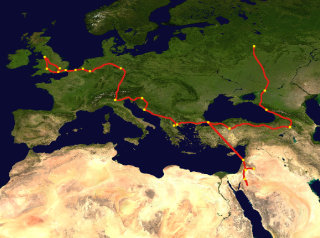
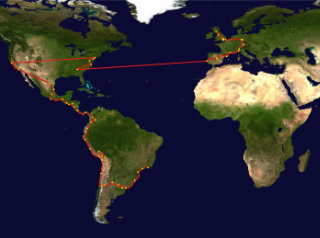
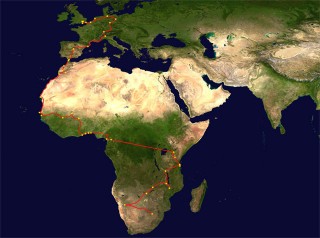
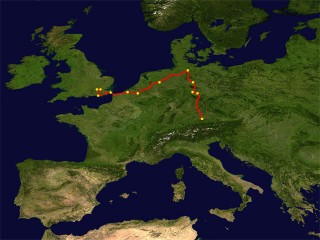
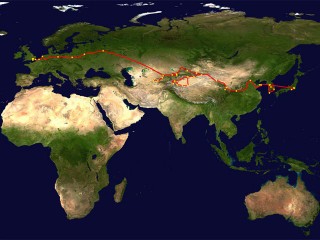


Thanks kindly for the nice mention of the article on Scottish football. I am glad that you were able to make connections to your quadrennial trip. We send our best regards to all in Battersea Park.